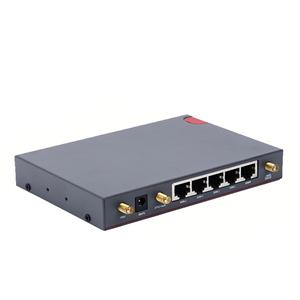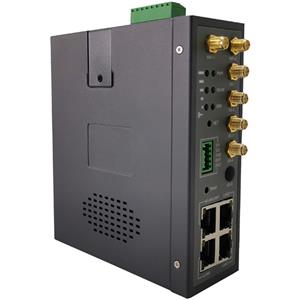Internet delle cose a banda stretta sotto il 5G
Internet delle cose a banda stretta sotto il 5G

Alcuni dicono che la seconda metà di Internet è l'era dell'Internet of Things. Questa non è necessariamente una dichiarazione falsa.
Di recente, sotto la guida del Ministero dell'Industria e dell'Information Technology, i tre principali operatori di telecomunicazioni e imprese come Huawei hanno ospitato congiuntamente il vertice dell'industria dei viaggi "100 milioni" NB-IoT del 5G tramite trasmissione in diretta online. Durante l'incontro, Liu Yulin, vicedirettore del Dipartimento per lo sviluppo delle informazioni e delle comunicazioni del Ministero dell'industria e della tecnologia dell'informazione, ha affermato che l'enfasi del paese sulle nuove infrastrutture ha portato importanti opportunità di sviluppo per le industrie emergenti come il 5G e l'Internet of Things. È necessario accelerare la formazione di un modello di sviluppo che utilizza NB-IoT, 4G, 5G e altre scale tecnologiche per intraprendere varie connessioni Internet of Things.
Tecnologia di succursale IoT con ampie prospettive di business
Il concetto di 5G è stato a lungo profondamente radicato nelle menti delle persone, e ciò che è esattamente NB-IoT, alcune persone potrebbero non essere ancora chiare.
NB-IoT è l'abbreviazione di Narrowband Internet of Things. La cosiddetta Internet of Things a banda stretta si riferisce all'Internet of Things costruita su una rete cellulare che consuma solo circa 180 kilohertz (kHz) di larghezza di banda. Perché i collegamenti dati cellulari che supportano dispositivi a bassa potenza in una rete ad ampia area sono anche chiamati reti ad ampia area a bassa potenza (LPWAN).
"Attualmente, la maggior parte dell'Internet of Things a banda stretta utilizza la tecnologia di comunicazione cellulare 2G / 3G / 4G sotto la banda di frequenza con licenza condivisa con comunicazione cellulare inferiore a 1GHz e supportata dall'Organizzazione internazionale di standardizzazione 3GPP." Institute of Cyber Attack and Defence Technology, School of Computer Science and Technology, Beijing Institute of Technology In un'intervista al quotidiano Science and Technology, Chang Yan Huaizhi ha affermato che l'Internet of Things a banda stretta è un Internet of Things a banda larga e può essere considerato un ramo dell'Internet of Things.
In September 2015, after the establishment of the third-generation cooperation project-3GPP RAN, the Narrowband Internet of Things received the attention and response of the vast majority of international operators, system equipment vendors, and terminal manufacturers. An Internet of Things branch communication standard with broad business prospects and uniformity worldwide.
Today, standing on the air of 5G, the narrow-band Internet of Things has been given a greater historical mission, will empower thousands of industries, and help realize the interconnection of all things. Liu Yulin said in a speech at the 5G NB-IoT "100 Million" Journey Industry Summit that as of the end of 2019, China had built more than 700,000 NB-IoT base stations, achieving continuous coverage of major cities and towns above the country, laying a foundation for the development of various applications Good network foundation.
Meet the needs of more than 70% of IoT scenarios
The reason why the narrowband Internet of Things has high hopes is determined by its own characteristics. Generally speaking, the narrowband Internet of Things has the characteristics of wide coverage, multiple connections, low power consumption and low cost.
Wide coverage will greatly improve the status quo of indoor coverage of the Internet of Things. In the same frequency band, the narrowband Internet of Things has a gain of 20dB compared to the existing network, which is equivalent to a coverage area of more than a hundred times enhanced; multi-connection means that its single sector can support 100,000 connections; low power consumption makes its terminal module standby time as long as 10 years; low cost refers to its low module cost, the cost of a single connection module can be reduced to 20-30 yuan.
"Because it is built on a cellular network, it can be directly deployed on a GSM (Global System for Mobile Communications) network, a UMTS (Universal Mobile Telecommunications System) network or an LTE (Long Term Evolution) network, which greatly reduces deployment costs and can be used on the existing network Smooth upgrade to quickly support industry market demand. "Yan Huaizhi said, the narrowband Internet of Things is considered to be one of the best solutions for the cellular network industry to deal with the Internet of Everything. The current application scenario is vertical industries such as public service or industrial control.
At the 5G NB-IoT "100 Million" Journey Industry Summit, Yang Tao, vice president of Huawei ’s China Carrier Business Department, stated that NB-IoT ’s features such as large connectivity, wide coverage, and low power consumption catered to more than 70% of IoT scenarios. demand.
At present, China's three major operators have achieved NB-IoT network construction and coverage in more than 300 cities, and provided billions of IoT special subsidies; at the same time, giant enterprises represented by Ali, Tencent, Huawei, Xiaomi, etc. It has also entered the Internet of Things.
Over the past three years, NB-IoT has achieved leapfrog development and has achieved scale implementation in multiple industries. In the four major areas of smart water meters, smart gas meters, smart firefighting, and smart electric bicycles, more than ten million narrow-band Internet of Things connections have been achieved; and smart manhole covers, smart door locks, tracking and positioning, smart street lights and other 10 industries have achieved more than Millions of narrowband IoT connections.
It is understood that in January 2020, the number of NB-IoT global connections exceeded 100 million; in February, the number of connections in China also exceeded 100 million. This marks that the NB-IoT industry has crossed the historical turning point and entered the stage of explosive growth. From the perspective of the distribution of operators, the number of NB-IoT connections of China Telecom and China Mobile has exceeded 40 million, while China Unicom has exceeded 10 million. It is expected that by the end of this year, the number of global 5G NB-IoT connections will double again.
Or trigger a disruptive innovation application revolution in many fields
Although the narrowband Internet of Things is developing rapidly, it still has deficiencies in many aspects.
The performance of Narrowband Internet of Things in terms of interoperability and consistency needs to be further improved; in terms of network coverage and infrastructure, the deployment and long-term support of Narrowband Internet of Things are greatly constrained by time and cost. For example, in terms of cost, although the cost of its modules has been reduced to less than 30 yuan, the overall cost of terminal module integration and application system adaptation is not considered to be relatively mature compared to 4G and 5G modules. Low; in terms of applications and business models, a complete partner ecosystem has not yet been established.
At the same time, NB-IoT is also facing fierce competition from other IoT connection technologies including LoRa. In addition, low-rate data transmission, privacy and security, IT system conversion time and other issues are also bottlenecks in its development.
Although the development of the mobile Internet of Things represented by NB-IoT has achieved breakthrough results, it also faces some challenges. At present, most of the NB-IoT connections in China are concentrated in a few cities, and there is still a lack of popularity throughout the country. A large number of base stations are in a light-load or no-load state; compared with advanced technologies such as 4G and 5G, 2G and 3G technologies The general utilization efficiency is low, but 2G and 3G IoT connections still account for a large share, accounting for nearly 20% of the new IoT connections. It is also necessary to accelerate the formation of 4G and 5G technology ladders to undertake various IoT connections Development pattern; network coverage needs to be further improved, and the NB-IoT network coverage level in some regions cannot fully meet the requirements of carrying 2G connection migration.
Industry standardization issues also need to be resolved urgently. In the past, China's IoT standards mainly focused on how to solve the connection problem between wireless terminals and networks. However, with the increasing application of NB-IoT, the standards of communication modules between enterprises have not been interoperable and are very messy. process.
In 2019, the NB-IoT technology is included in the IMT-2020 (5G) candidate technology proposal submitted by China. It is expected that in June this year, the International Telecommunication Union (ITU) will officially announce the 5G technology solution, and NB-IoT will become the mainstream technology of the future 5G IoT Just around the corner.
Con l'avvento dell'era del 5G, NB-IoT è destinato a mostrare le sue capacità nel supporto multicast, mobilità continua e nuovi livelli di potenza. Allo stesso tempo, il miglioramento di infrastrutture come NB-IoT promuoverà a sua volta il vero atterraggio e la divulgazione del 5G. In futuro, l'integrazione delle tecnologie 5G e NB-IoT rafforzerà le altre industrie tradizionali e sicuramente causerà un nuovo ciclo di innovazioni e rivoluzioni dirompenti nell'Internet industriale, nell'Internet dei veicoli e nei sistemi senza pilota.




